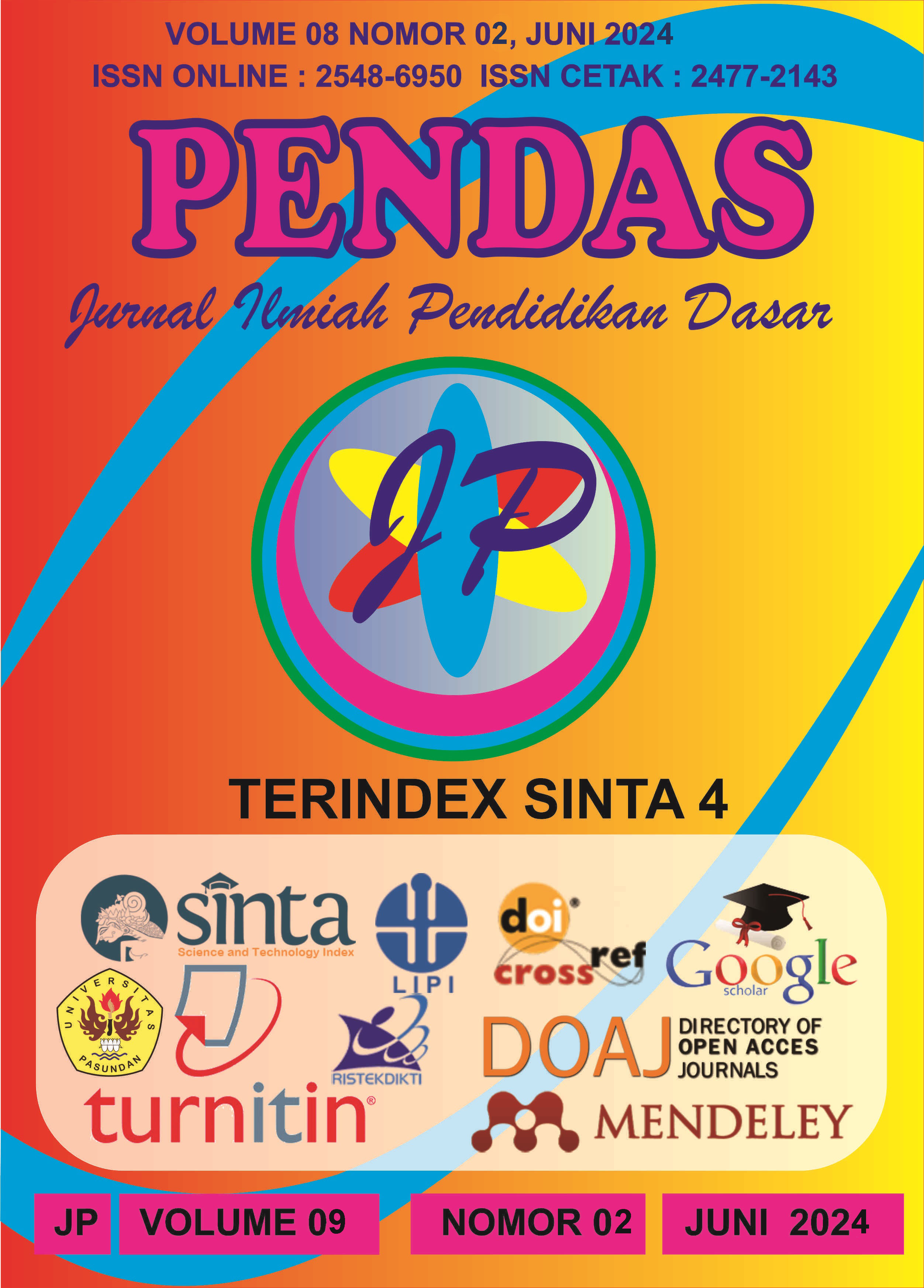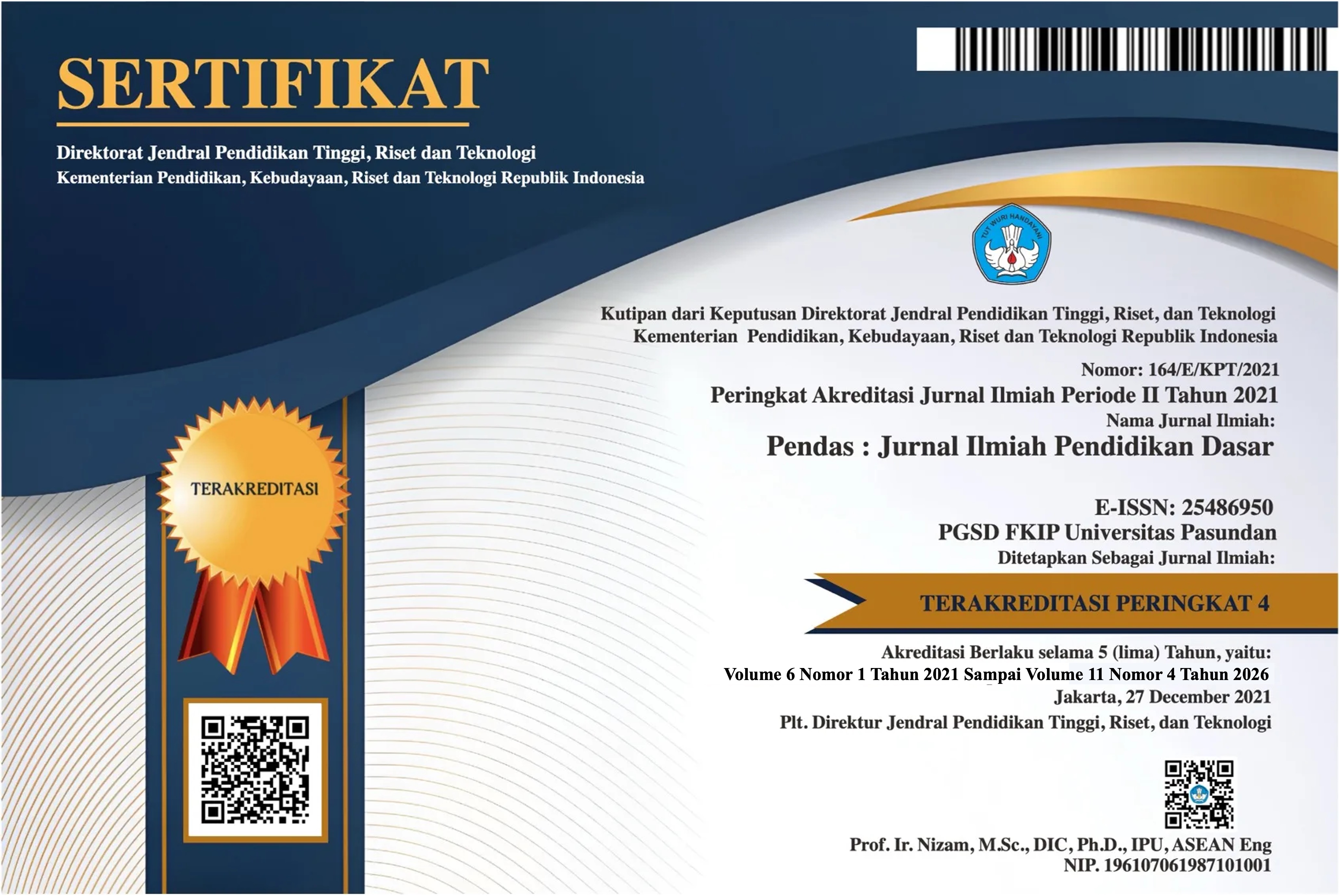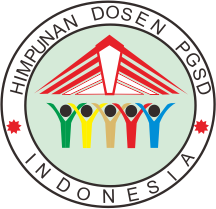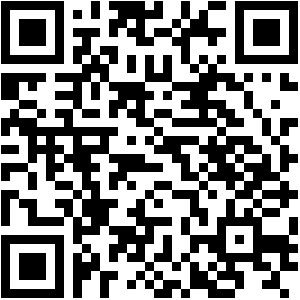IMPLEMENTASI MODEL BLENDED LEARNING BERBASIS PLATFORM ALEF EDUCATION PADA PEMBELAJARAN BAHASA ARAB DI MTS AL – ABROR SIDOARJO
DOI:
https://doi.org/10.23969/jp.v9i2.13288Abstract
This research aims to evaluate the implementation of the blended learning model based on the Alef Education platform in Arabic language learning at MTS Al-Abror Sidoarjo. The research method used is a case study with a qualitative approach. Data was collected through observation, interviews and document analysis. The research results show that the implementation of the blended learning model using the Alef Education platform increases student engagement, expands access to learning materials, and provides time flexibility for students. However, challenges such as the availability of technological infrastructure and teachers' skills in managing the platform need to be overcome to maximize this learning potential. This research provides insight for schools and Arabic language teachers in utilizing technology to improve the quality of learning.Downloads
References
S. Larabi Marie-Sainte, N. Alalyani, S. Alotaibi, S. Ghouzali, and I. Abunadi, “Arabic natural language processing and machine learning-based systems,” IEEE Access, vol. 7, pp. 7011–7020, 2019, doi: 10.1109/ACCESS.2018.2890076.
T. Mardiyah, “Penggunaan Model Active Learning Dalam Pembelajaran Materi Qirāah,” Al Mi’yar J. Ilm. Pembelajaran Bhs. Arab dan Kebahasaaraban, vol. 2, no. 2, p. 225, 2019, doi: 10.35931/am.v2i2.154.
A. W. Ritonga, “The Orientation Of Multiple Intelligence Framework In Learning Arabic In Digital Era,” Lisanan Arab. J. Pendidik. Bhs. Arab, vol. 5, no. 2, pp. 107–126, 2021, doi: 10.32699/liar.v5i2.2001.
M. Ritonga, S. R. Febriani, M. Kustati, E. Khaef, A. W. Ritonga, and R. Yasmar, “Duolingo: An Arabic Speaking Skills’ Learning Platform for Andragogy Education,” Educ. Res. Int., vol. 2022, 2022, doi: 10.1155/2022/7090752.
V. Ahmed and A. Opoku, Technology supported learning and pedagogy in times of crisis: the case of COVID-19 pandemic, vol. 27, no. 1. Springer US, 2022. doi: 10.1007/s10639-021-10706-w.
R. Calafato, “Learning Arabic in Scandinavia: Motivation, metacognition, and autonomy,” Lingua, vol. 246, p. 102943, 2020, doi: 10.1016/j.lingua.2020.102943.
M. Fauzan, T. Thoriquttyas, and M. W. Dariyadi, “Feasibility Test for Learning Innovation on Arabic Teaching in Indonesian Higher Education: Study on Tarkib Mukatstsaf Ibtida’I,” Al Mi’yar J. Ilm. Pembelajaran Bhs. Arab dan Kebahasaaraban, vol. 3, no. 2, p. 215, 2020, doi: 10.35931/am.v3i2.340.
A. Youde, “‘Face-to-Face Trumps Everything’: An Exploration of Tutor Perceptions, Beliefs and Practice Within Blended Learning Environments,” Educ. Sci., vol. 10, no. 5, 2020, doi: 10.3390/educsci10050147.
S. B. Abdulazeez, “Konsepsi sikap ; peran pembelajaran blended learning dalam pendidikan lingkungan hidup,” 2018.
E. J. Q. Ikhwan and P. Widodo, “Attitude conception: The role of blended learning in environmental education.,” Int. J. Linguist. Lit. Transl., vol. 2, no. 6, pp. 53–62, 2019, doi: 10.32996/ijllt.2019.2.6.7.
D. Hilmi and N. I. Ifawati, “Using the Blended Learning As an Alternative Model of Arabic Language Learning in the Pandemic Era,” Arab. J. Arab. Stud., vol. 5, no. 2, p. 117, 2020, doi: 10.24865/ajas.v5i2.294.
Susanto and A. Desrani, “The existence of islamic boarding schools during the covid-19 pandemic: management of face-to-face Meetings in the New Normal Era,” Nazhruna J. Pendidik. Islam, vol. 5, no. 2, pp. 711–724, 2022, [Online]. Available: https://www.e-journal.ikhac.ac.id/index.php/NAZHRUNA/article/view/2312%0Ahttps://www.e-journal.ikhac.ac.id/index.php/NAZHRUNA/article/download/2312/936
N. Abusalim, M. Rayyan, M. Jarrah, and M. Sharab, “Institutional adoption of blended learning on a budget,” Int. J. Educ. Manag., vol. 34, no. 7, pp. 1203–1220, Jan. 2020, doi: 10.1108/IJEM-08-2019-0326.
A. S. Waranggani, “Platform Berbasis AI untuk Siswa Madrasah Belajar Matematika.” [Online]. Available: https://www.cloudcomputing.id/berita/alef-platform-ai-untuk-belajar-matematika
Apandi, A.M., & Raman, A., “International Journal of Instruction , Technology & Social Sciences Factors Affecting Successful implementation of Blended Learning at Higher Education Factors Affecting Successful Implementation of Blended Learning at Higher Education,” Int. J. Instr. Technol. Soc. Sci., vol. 1, no. 1, pp. 13–23, 2020.
Herawati, “Penerapan Model Blended Learning Berbasis Platform Alef Education pada Pembelajaran Matematika Herawati MTsN 9 Aceh Timur , Kementrian Agama Kabupaten Aceh Timur , Jurnal Dimensi Matematika Pendahuluan Pendidikan selalu hidup di dunia yang terus berubah d,” J. Dimens. Mat., vol. 05, no. 02, pp. 519–524, 2022, [Online]. Available: https://ejurnalunsam.id/index.php/JDM
S. Nanda, “Metode Penelitian Kualitatif.” [Online]. Available: https://www.brainacademy.id/blog/metode-penelitian-kualitatif
M. R. Fadli, “Memahami desain metode penelitian kualitatif,” Humanika, vol. 21, no. 1, pp. 33–54, 2021, doi: 10.21831/hum.v21i1.38075.
N. Nurbiah, A. Syafi’i, and F. Fahril, “Implementasi Model Problem Based Learning (Pbl) Berbantuan Alef Education Dalam Meningkatkan Hasil Belajar Siswa Pada …,” Educandum, vol. 9, no. 1, p. 128, 2023.
Downloads
Published
Issue
Section
License
Copyright (c) 2024 Pendas : Jurnal Ilmiah Pendidikan Dasar

This work is licensed under a Creative Commons Attribution 4.0 International License.



















